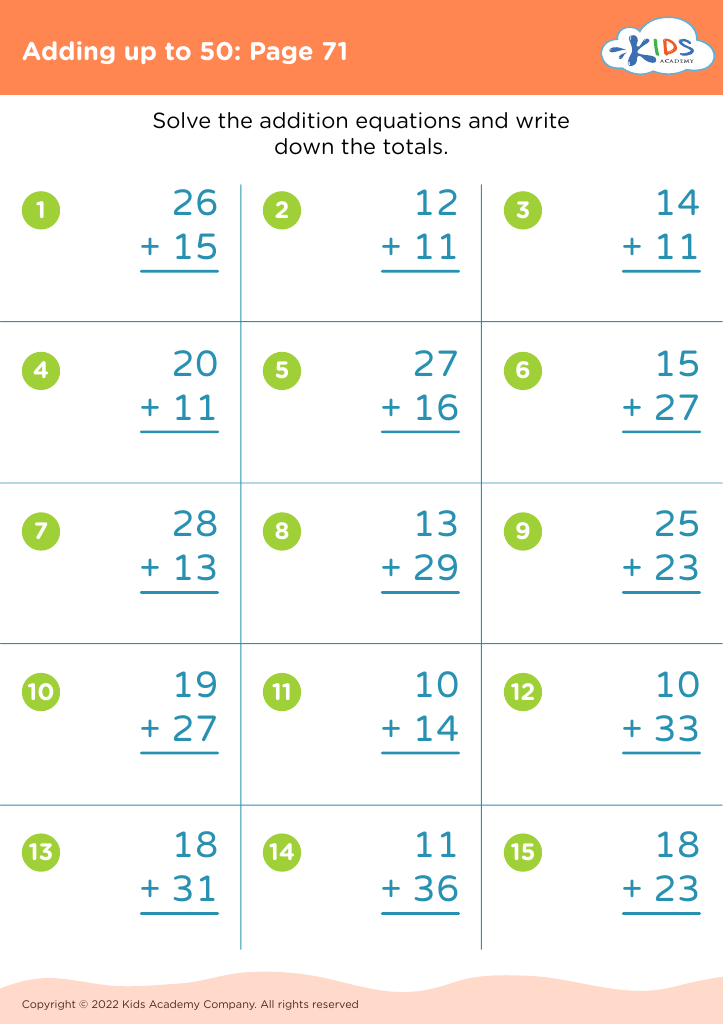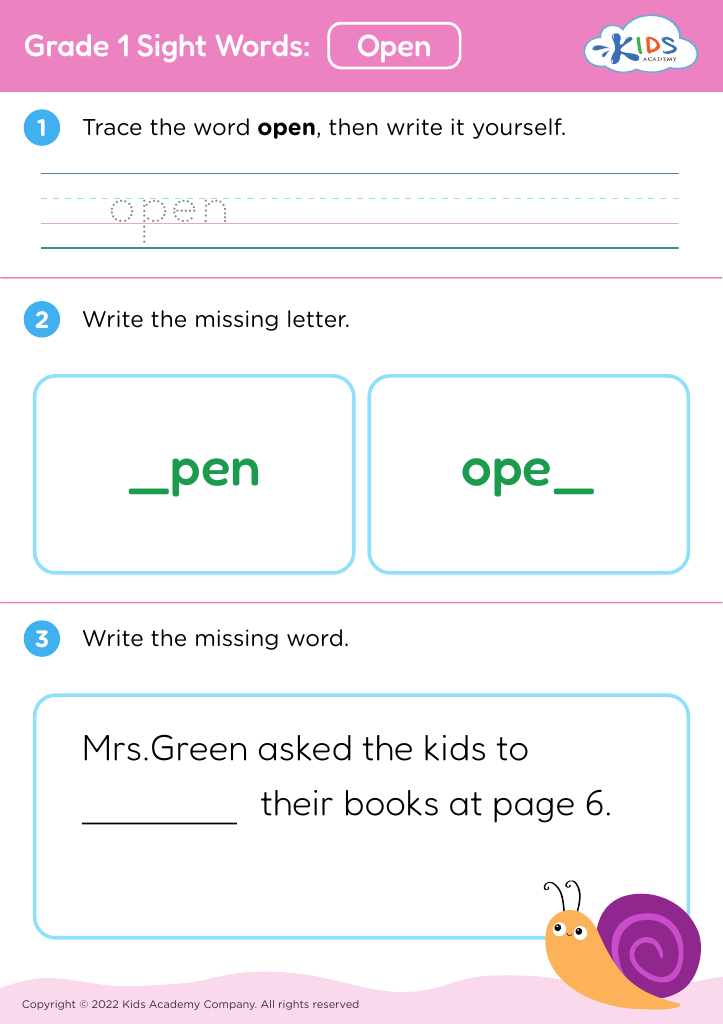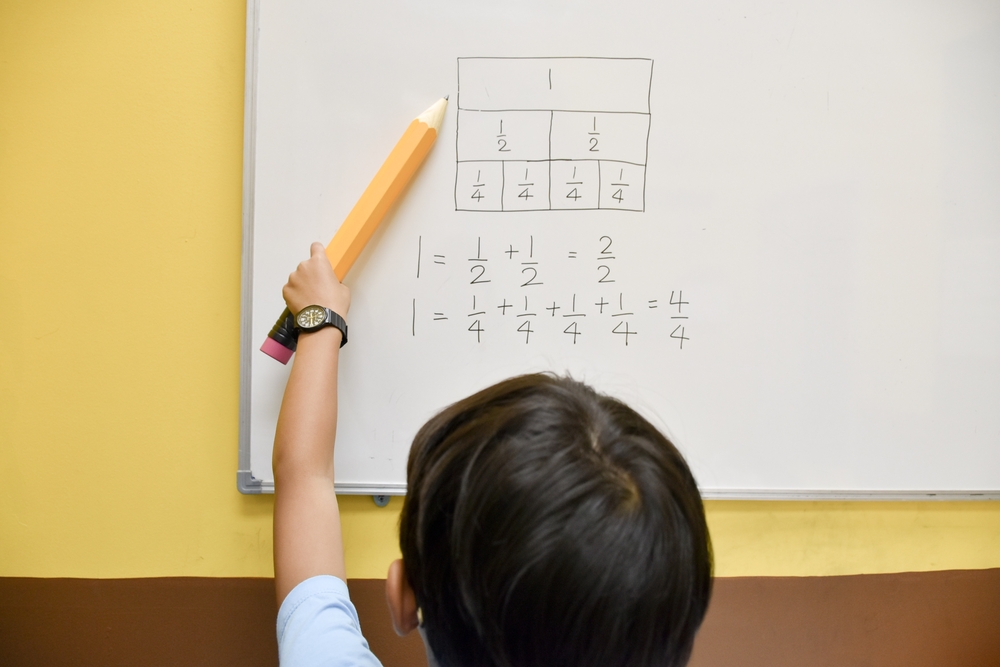Understanding clocks Worksheets for Ages 6-8
6 filtered results
-
From - To
Discover our engaging "Understanding Clocks Worksheets" designed specifically for kids aged 6-8! These worksheets provide fun and interactive activities to help young learners grasp the concept of telling time. From identifying clock faces to practicing reading hours and half-hours, each worksheet aims to build confidence in time-telling skills. Perfect for classroom use or at-home learning, our resources encourage critical thinking while promoting teamwork as students work together to solve time-related challenges. Enhance your child's numeracy skills and boost their self-expression through exciting exercises. Explore our diverse collection today and watch your child become a time-telling pro!
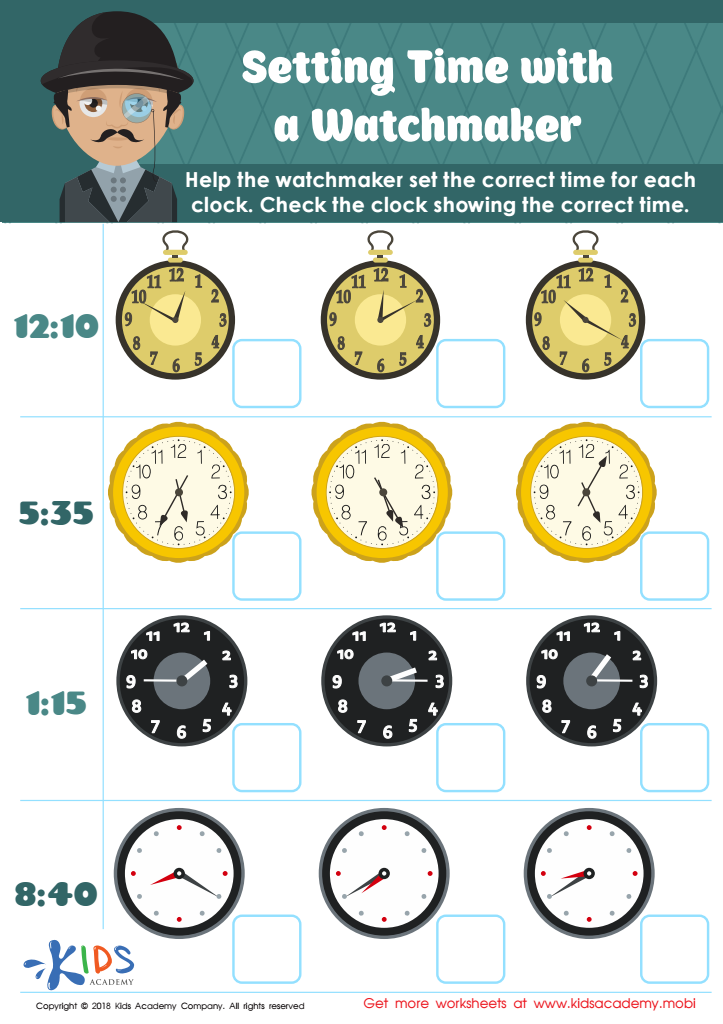

Setting Time with Watchmaker Worksheet
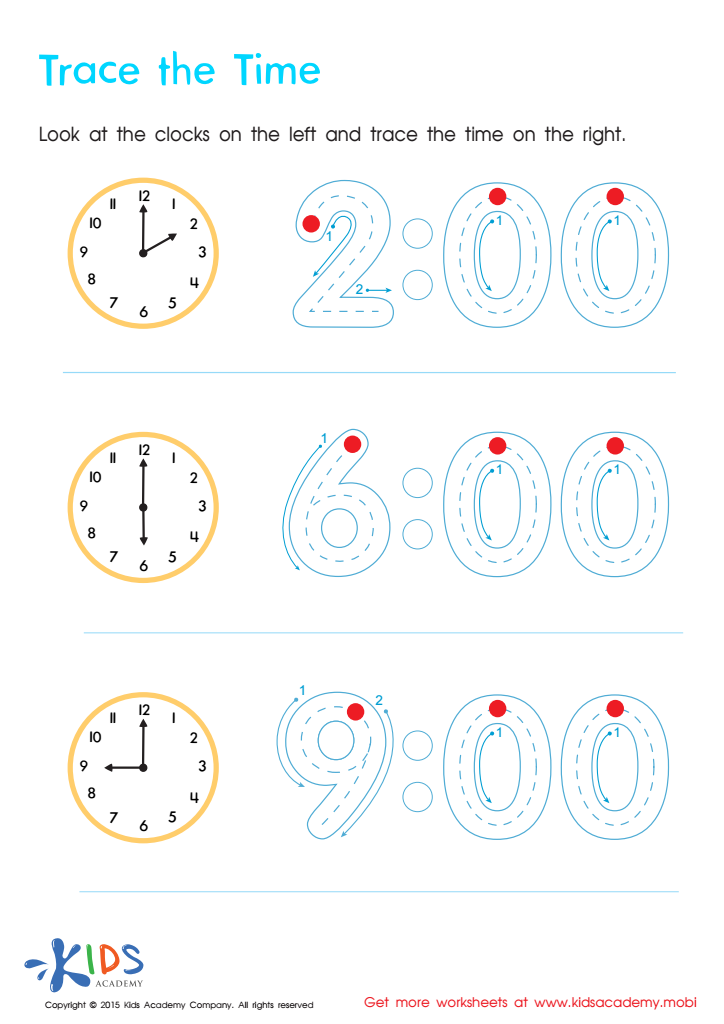

Telling The Time Worksheet: Part 2
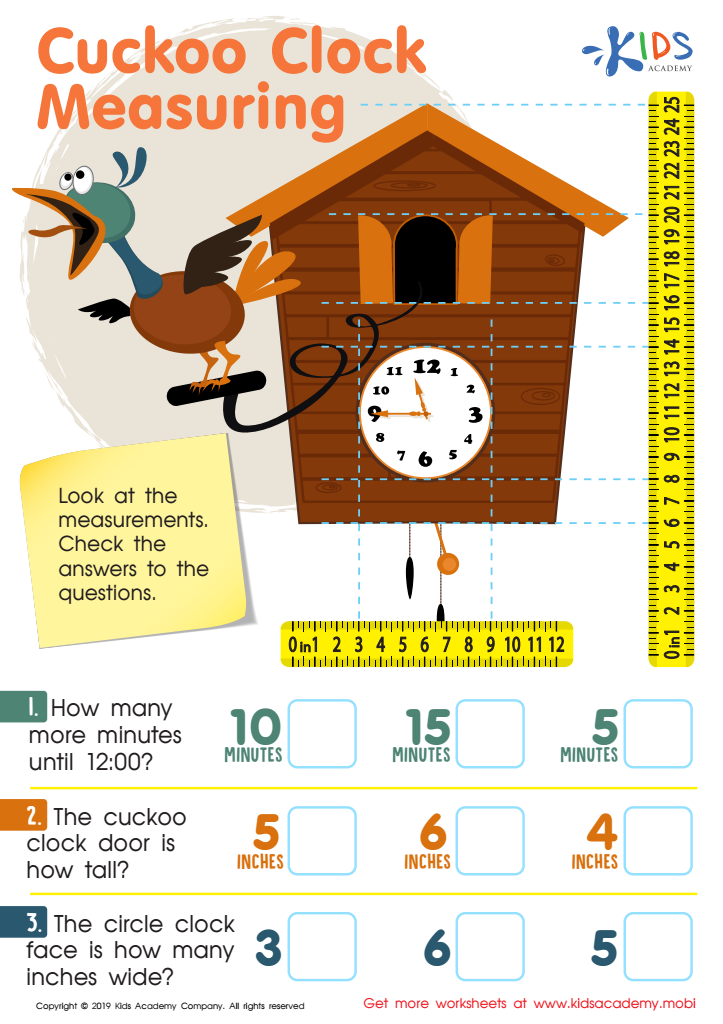

Cuckoo Clock Measuring Worksheet
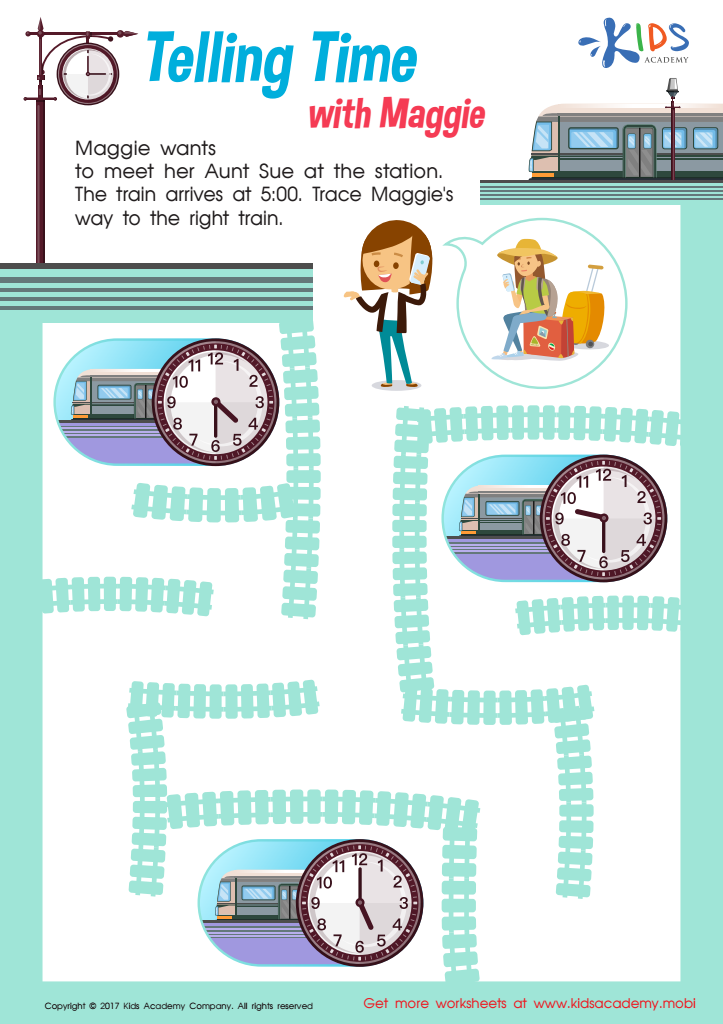

Telling Time With Maggie Time Worksheet
Understanding clocks and time is essential for children aged 6-8 as it lays the foundation for critical life skills. At this age, children are increasingly beginning to manage their own schedules, from keeping track of school activities to understanding daily routines. Learning to read both analog and digital clocks empowers them to be more independent, fostering confidence and self-reliance.
Moreover, mastering concepts of time—including hours, minutes, and seconds—enhances cognitive development. It aids in the understanding of patterns, sequences, and numerical comprehension, which are pivotal for future math skills. Recognizing the passage of time also helps children grasp concepts like planning, punctuality, and responsibility, all of which are vital traits in school and beyond.
In addition, understanding time is linked to a child’s ability to make personal choices and manage time effectively, which contributes to better academic performance. Engaging in activities related to clocks, such as games and storytelling, can make learning about time enjoyable and memorable. Overall, investing time and resources into helping children comprehend clocks enhances their overall educational experience and prepares them for the challenges of growing up. For parents and teachers, supporting this key area of learning is integral to a child's development.
 Assign to My Students
Assign to My Students

